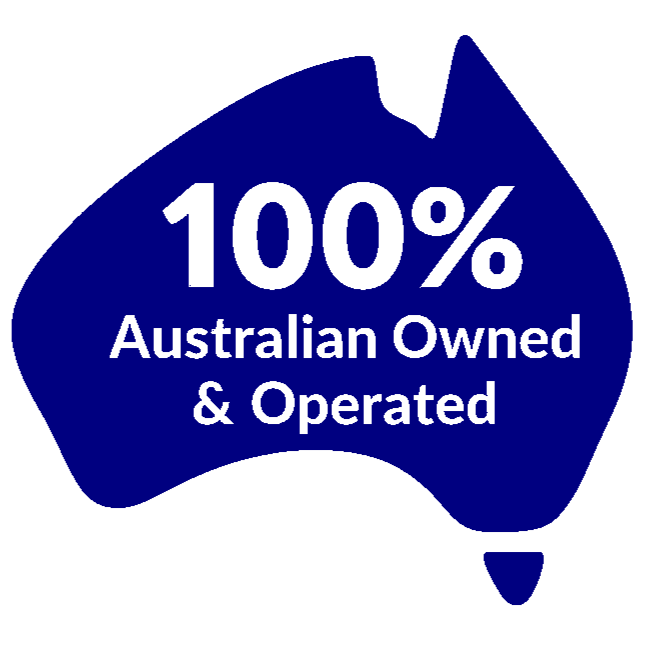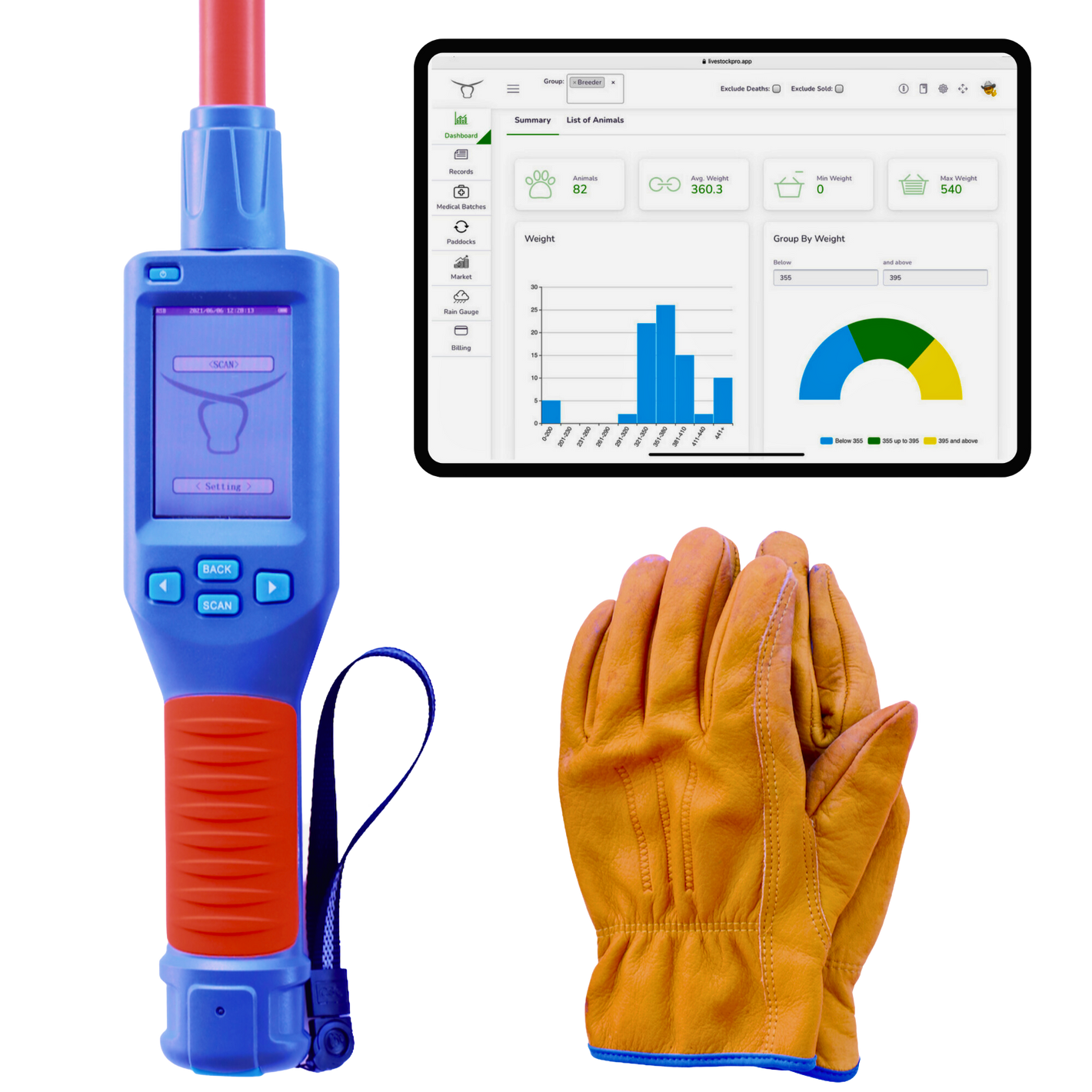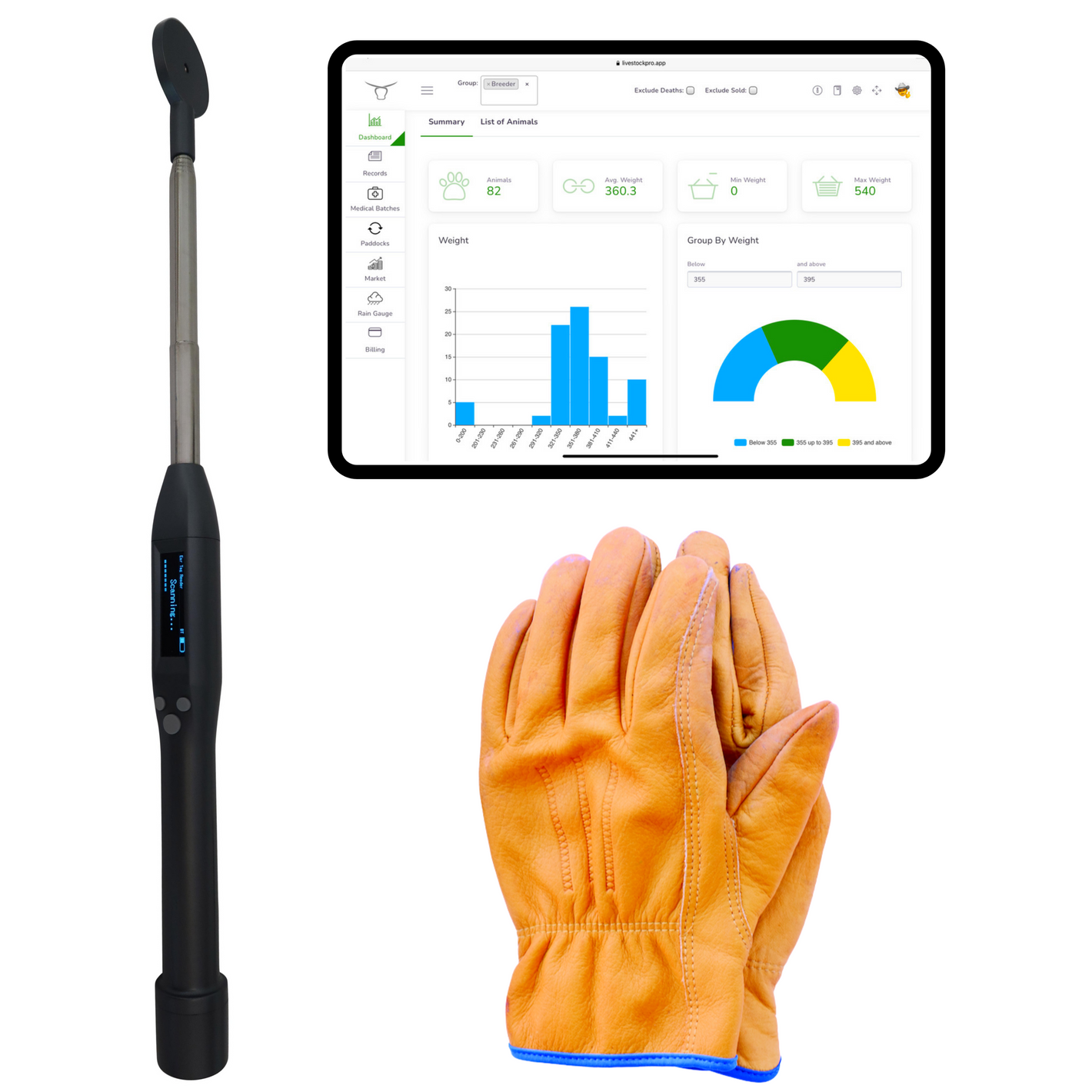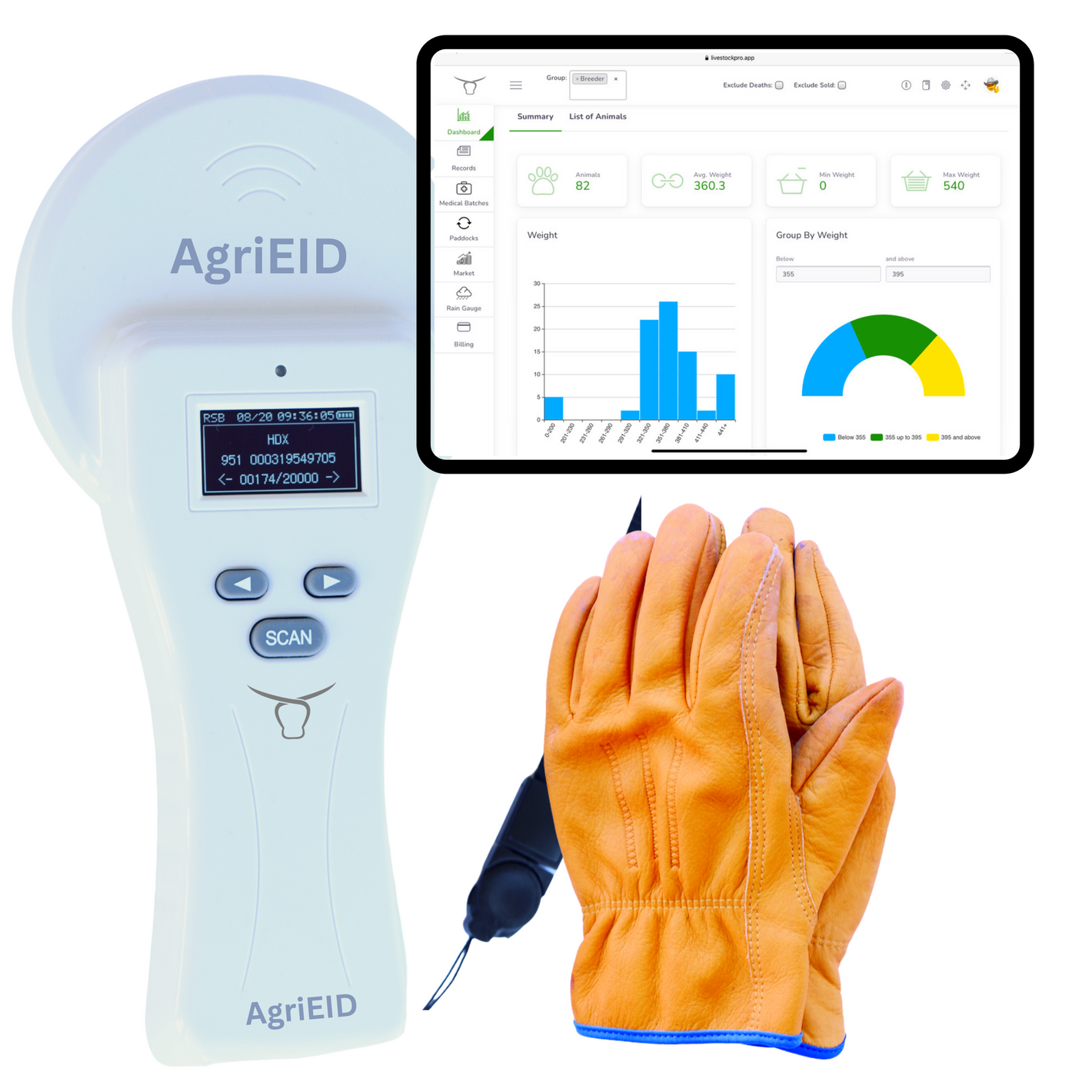Fed up with manually typing in livestock tag numbers? You're not the only one! This article is all about NLIS Tag Reader - the ultimate answer to quickly and accurately reading all livestock tags. This revolutionary technology will help you to manage your farm's data with greater efficiency and monitor your livestock with ease.
What is an NLIS device?
NLIS devices are the way of the future for livestock identification and traceability. They attach to an animal's ear or other body parts and contain unique information. Constructed with materials strong enough to survive on the farm, they accurately track individual animals from birth to death. Data stored includes location history, health records, and more. With NLIS devices, farmers can better manage their stock and comply with regulations. Plus, they help protect against disease outbreaks and food safety risks.
So don't miss out! Take advantage of this tech to enhance your farm and keep up with agricultural progress. What is the purpose of the NLIS system? Tag and track - that's the name of the game!
What is the purpose of the NLIS system?
The NLIS system has a purpose: efficiently track and identify livestock. Its goal? Enhance biosecurity, safeguard consumer safety, and ensure market access. It does this by using electronic tags. Traceability throughout the supply chain is accurate. Disease surveillance and management is improved, as is animal welfare and productivity. Data sharing between producers, processors, and regulatory authorities is seamless.
John, a farmer, experienced the system's benefits when his herd was affected by a contagious disease outbreak. The tag reader identified and tracked the herd quickly. This contained the spread of the disease and minimized financial losses. The NLIS system protects animals and livelihoods in the agricultural industry.
What's the difference between NLIS and RFID? NLIS is a cattle tagging system. RFID is what aliens use to track unsuspecting humans!
What is the difference between NLIS and RFID?
The NLIS Tag Reader is the key to unlocking the secrets of tracking and identifying livestock. NLIS, or National Livestock Identification System, is a comprehensive monitoring system in Australia. On the other hand, RFID (Radio Frequency Identification) is a more versatile technology with various applications. Let's explore their key features:
| Feature | NLIS | RFID |
|---|---|---|
| Purpose | Identifying & tracking livestock | Multiple uses |
| Range | Specific geographic areas | Long-distance |
| Data Storage | Origin and movement of livestock | Product details/inventory |
| Implementation | Australia-wide | Global |
NLIS focuses solely on livestock, ensuring a traceable supply chain and swift responses to disease outbreaks. RFID has a wider range of uses, such as supply chain management, retail control, and even access control systems. Its versatility makes it suitable for many industries.
How does EID tag reader work?
The EID reader is a revolutionary device that uses advanced technology to scan NLIS tags. It's a combination of RFID and barcode scanning. This data is then stored in a database or online system.
The Eid reader offers many advantages. It reduces human error, increases accuracy and efficiency, and enhances traceability. It also saves time and provides real-time data.
This is essential for anyone involved in livestock management or trading. It helps to stay ahead of competitors, improve operational efficiency, and achieve greater profitability.
Don't miss out! Invest in an Eid reader to revolutionize your operations today. Find out which NLIS approved devices will make your neighbors jealous!
What devices are NLIS approved?
NLIS-approved devices are top-notch tools that ensure precise tracking and identification of livestock. They are made with cutting-edge technology to simplify the management process and conform to industry regulations.
Here's a comprehensive table of some of the NLIS-approved devices:
| Device Name | Features |
|---|---|
| AgriEID Mini | High scanning accuracy |
| AgriEID Compact | Wireless connectivity |
| AgriEID Smart Stick | Data encryption |
| AgriEID Heavy Duty Stick | User-friendly interface |
These devices not just give real-time updates on livestock movements, but also record vital info like animal health records, weight, and ownership details. By using these technologically advanced tools, farmers can manage their stock effectively while abiding by NLIS regulations.
Pro Tip: When using an NLIS-approved device, always update the software to gain from new features and better performance. NLIS Tag Reader: Making livestock identification more bearable, 'cause losing a cow is udderly depressing.
What are the negatives of NLIS?
NLIS? Do you need it? If you're content with not knowing which cow's tag is linked to its legendary dance moves, then skip it. But, keep these disadvantages in mind if you're considering using NLIS (National Livestock Identification System).
Cost is a factor. Electronic tags and readers cost money. This may stop some livestock owners from fully embracing the system.
Technology can be unreliable. Tag readers may malfunction, leading to data inaccuracies. This could be disastrous in case of a disease outbreak or food safety problems.
Internet and electricity are needed. In remote regions, it's hard to use and maintain NLIS if there's no reliable internet or electricity. This could mean that NLIS won't work in some areas.
Do I need NLIS?
The National Livestock Identification System (NLIS) is key for livestock owners and the agricultural industry. It offers accurate and traceable identification of animals, meaning better disease control and market access. NLIS protects your investments and contributes to industry health and safety.
NLIS helps track and monitor animal movements through their life. It simplifies record-keeping, making it simpler to stick to regulations and show good farming. Additionally, NLIS aids in biosecurity risk management by quickly finding potential disease outbreaks, allowing quick action to be taken.
NLIS offers real-time data on animal movement. This lets farmers make wise decisions on restocking, transporting, and accessing new markets. By having this info, you can optimize farming operations and increase profit.
Pro Tip: Updating your NLIS records often guarantees accurate data tracking and maximizes NLIS's benefits. Be proactive in using NLIS to keep your livestock healthy and support a vibrant agricultural sector.
What are the 3 elements of NLIS?
The National Livestock Identification System (NLIS) has three elements that enable the tracking and monitoring of livestock. NLIS tags are applied to individual animals and act as unique identifiers. They include details like the birthplace, sex, and owner info. These tags can be visual or electronic.
Tag Readers are devices used to scan the tags on animals. They can be handheld or stationary and are necessary for collecting tag data quickly. NLIS databases store and manage info from the tags. This data is important for tracking the movement, location, health, and ownership of livestock.
There are rules and standards in place to make sure all industry requirements are met. Moreover, there's evidence of NLIS having a positive effect on livestock management. A farmer in a remote area found an animal lost due to NLIS. This shows how the system helps farmers in real-life.
What are the benefits of NLIS tags?
NLIS tags are an indispensable tool for livestock management, offering numerous benefits. Here are just five of the key advantages:
- Traceability: Easily and accurately track animals throughout the supply chain. Biosecurity and food safety are improved.
- Disease control: Quickly identify and isolate sick animals, safeguarding health and minimizing economic losses.
- Data-driven decisions: Automated data collection gives valuable insights into animal performance, genetics, and health. Farmers can make informed decisions for optimal herd management.
- Regulatory compliance: Fulfil requirements for livestock identification and movement documentation. Essential for accessing various markets and maintaining industry integrity.
- Supply chain efficiency: Track an animal's journey easily, ensuring transparency and enabling prompt response when needed.
Plus, NLIS tags support farm-to-fork initiatives, giving consumers confidence in the origin and quality of the meat they consume.
Don't miss out on the many benefits of NLIS tags! Get wet with productivity - join the growing community embracing this transformative technology and enhance your livestock management practices today!
Should I get RFID or NFC?
RFID and NFC are two popular technologies, with different features. Should you go for RFID or NFC? That depends on your unique requirements!
- Security: RFID has a unique identifier in each tag, making it hard to duplicate. NFC tags have built-in encryption, making them secure for financial transactions.
- Range: RFID tags can be read from a distance of several meters, useful for inventory management or tracking. NFC tags have a shorter range of a few centimeters, useful for contactless payments or access control.
- Compatibility: RFID is widespread across industries and works with existing infrastructure. NFC is usually integrated with smartphones, allowing communication between devices.
- Application: Use RFID for long-range identification and tracking. Use NFC for mobile payments or smart device interactions.
Make a wise decision by looking at these factors and your needs:
- If security is top priority, choose RFID.
- NFC is great for convenience and ease of use.
- Use RFID for long-range identification and tracking.
- NFC is best for contactless payments and device interactions.
Take into account your needs and make the right choice between RFID and NFC technology for your application. RFID even enables tracking of livestock with the NLIS Tag Reader - so it's not just for catching cheating spouses!
Is RFID better than GPS?
RFID and GPS are both useful for tracking and monitoring. RFID is good for close-range identification and item-level tracking. GPS is better for long-distance location tracking in real-time. Here's a comparison:
| RFID | GPS Tracking | |
|---|---|---|
| Range | Short | Long |
| Accuracy | High | Low |
| Cost | Cheap | Expensive |
| Power Consumption | Low | High |
RFID tags are smaller, which makes them great for embedding in objects. GPS needs satellites to work, so it's not so good in areas with poor coverage or obstructions.
TechTarget did a study - RFID is growing steadily due to its versatility and cost-effectiveness.
Which is better? It depends on the project. But the NLIS Tag Reader makes tracking livestock more fun than a satellite game of hide and seek!
Which is better RFID or GPS?
RFID and GPS are both trackers and identifiers. RFID is great for short-range applications, but GPS is king for far-off tracking. Here's a comparison:
| Feature | RFID | GPS |
|---|---|---|
| Range | Short | Long |
| Accuracy | High | Very High |
| Cost | Low | High |
| Power Consumption | Low | High |
| Real-time Tracking | No | Yes |
RFID tags are smaller and can be embedded or attached to items. GPS needs an open view of the sky and satellite signals.
A logistics firm used RFID tags on their products to improve inventory management. This reduced manual errors, improved supply chain, and increased efficiency. It shows the real benefits of RFID.
RFID chips tracking us? Spooky. But even scarier - our socks can find their way better than us!
Can RFID chip track you?
RFID tech is commonplace, yet can it truly be used to monitor us? The answer is both yes and no.
- RFID chips can only send info wirelessly, but not like GPS or mobile devices, as they have short range & require a reader to be detected.
- In certain situations, these chips can be used to trace someone's movement - if they carry an RFID-enabled card & pass through checkpoints with readers.
- Plus, if personal data is linked to the chip, then tracking is possible with the help of several systems.
Privacy is also protected with RFID tech.
- Data transmission is secured with encryption algorithms, and there are strict regulations on collecting & storing info obtained from RFID.
- To stay safe, use protective sleeves or wallets that block signals emitted by RFID tags, preventing unauthorized scanning & potential privacy breaches.
Don't discount RFID though - it may be old school, but with its power to manage inventory, it's giving the NLIS Tag Reader a run for its money!
Is RFID outdated?
RFID, or Radio Frequency Identification, is an amazing tech tool that still counts today. It gives real-time tracking and monitoring through radio waves between a tag and a reader device. This is great for businesses, as it helps them manage their assets and inventory.
Unlike barcodes, RFID tags don't need line-of-sight scanning. This means it's easier to use and more efficient, reducing human error. Plus, RFID tags have gotten smaller and cheaper, while reader devices are faster and more accurate.
The concept of radio wave identification dates back to World War II. British scientists developed it to track aircraft and it was the base of modern-day RFID systems.
So, RFID is here to stay!
How long do RFID tags last?
RFID tags have different lifespans. Passive tags can last up to 10 years, whereas active tags usually only last a few years. Wear and tear and environmental conditions can reduce these lifespans.
It is important to think about read range and frequency too. HF tags are suitable for short-range applications, while UHF tags provide more range. Choose the right tag for your specific needs.
Caring for your RFID tags properly can extend their life. Make sure they are clean and stored well, to make sure they keep working well.
Remember: Choose RFID tags that will fit with your system and be durable. This will help them last longer.
Frequently Asked Questions
1. What is an NLIS Tag Reader?
An NLIS Tag Reader is a device used to read the National Livestock Identification System (NLIS) tags that are attached to livestock animals for identification and traceability purposes.
2. How does an NLIS Tag Reader work?
An NLIS Tag Reader uses radio frequency identification (RFID) technology to read the electronic tags attached to livestock animals. The reader emits radio waves to communicate with the tags and retrieves the unique identification number associated with each animal.
3. What are the benefits of using an NLIS Tag Reader?
Using an NLIS Tag Reader provides several benefits, including:
- Efficient and accurate identification of livestock animals.
- Improved traceability and animal health management.
- Streamlined record-keeping and compliance with regulatory requirements.
- Facilitation of disease control and prevention measures.
4. Can an NLIS Tag Reader be used with different types of NLIS tags?
Yes, an NLIS Tag Reader is designed to be compatible with different types of NLIS tags, such as visual ear tags and electronic tags. However, it is important to ensure that the reader supports the specific tag technology used in your region.
5. Are there any legal requirements for using an NLIS Tag Reader?
The use of NLIS Tag Readers may be subject to legal requirements and regulations specific to each country or region. It is essential to familiarize yourself with the local legislation regarding the use and registration of NLIS tags and readers.
6. Where can I purchase an NLIS Tag Reader?
NLIS Tag Readers can be purchased from agricultural supply stores, online retailers specializing in livestock equipment, or directly from manufacturers or authorized distributors. It is recommended to choose a reader from a reputable supplier to ensure quality and compatibility.
For more information please check out https://nlis.co about the NLIS System in Australia.



